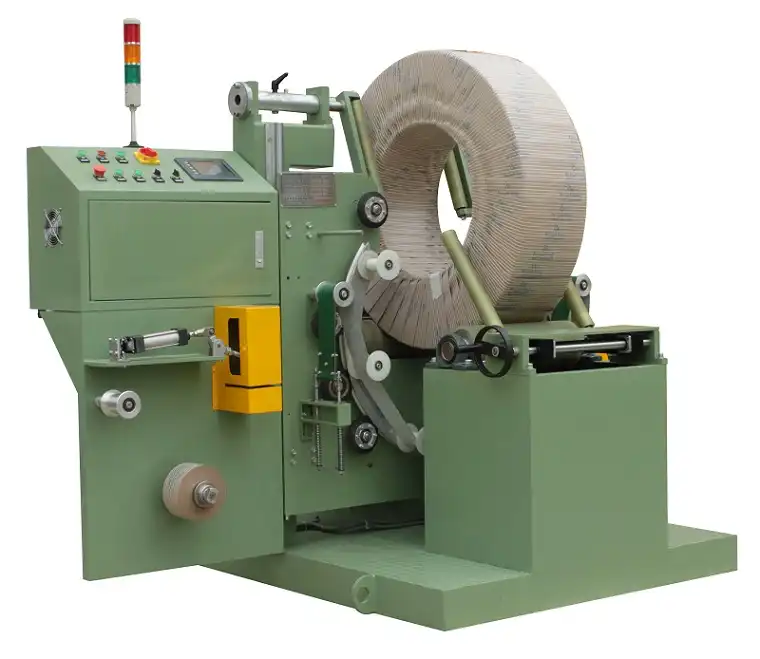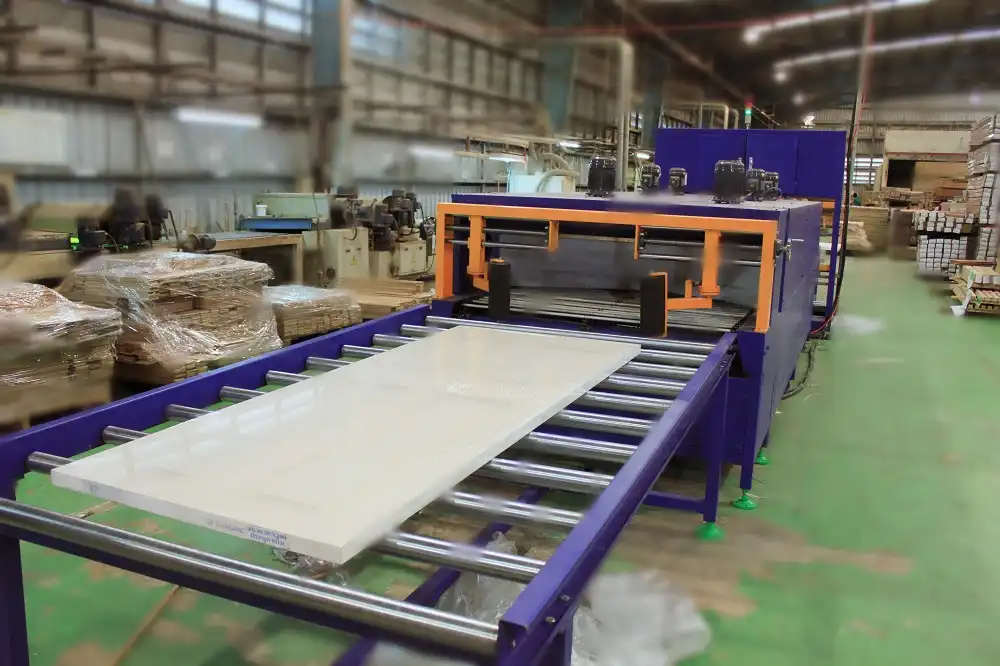Steel coil packaging is a critical step in the steel industry, ensuring that coils arrive at their destination in optimal condition. But understanding the costs associated with packaging is essential for budgeting and profitability. From materials to labor and equipment, numerous factors influence the final price tag.
The cost of steel coil packaging varies widely, typically ranging from a few dollars for basic wrapping to upwards of \$50-\$100 or more per coil for complex, automated solutions. This depends heavily on factors like coil size and weight, packaging materials used (steel, plastic, paper), level of automation in the packaging process, and any specific customization requirements.
Understanding these cost drivers is key to making informed decisions and optimizing your steel coil packaging strategy. Let’s delve into the details to uncover the true cost of protecting your valuable steel coils.


To truly grasp the expense, we need to break down the intricate pricing structure of steel coil packaging. By examining each component, businesses can gain clarity and control over their packaging expenditures.
Understanding the Pricing Structure for Steel Coil Packing Lines
Investing in a steel coil packing line is a significant decision, and understanding the pricing structure is paramount. The initial outlay can seem substantial, but a deeper look reveals a complex interplay of factors that determine the final cost. From machinery type to customization demands, each element contributes to the overall investment.
The pricing of steel coil packing lines is influenced by several core components: machinery type (manual, semi-automatic, fully automatic), level of customization required, technology integration (IoT, sensors), and the capacity of the line (coils per hour). Fully automated, customized lines with advanced technology and high capacity will naturally command a higher steel coil packaging cost compared to basic, manual systems.
Deconstructing Cost Drivers: A Detailed Look
To truly understand the pricing, we need to dissect the key cost drivers. It’s not simply about the machine itself; it’s about the features, capabilities, and long-term value it brings to your operation. Let’s break down these drivers and analyze their impact on the final price tag.
| Cost Driver | Description | Cost Impact | Considerations |
|---|---|---|---|
| Automation Level | Ranges from manual, requiring significant labor, to fully automated systems with minimal human intervention. | High | Higher automation reduces labor costs long-term but increases upfront investment. Consider production volume and labor expenses. |
| Customization | Standard lines are cheaper, but tailored solutions for specific coil sizes, materials, or integration with existing systems increase costs. | Medium to High | Customization ensures optimal fit and efficiency but adds to engineering and manufacturing expenses. Evaluate necessity of specific customizations. |
| Technology Integration | Inclusion of advanced features like IoT sensors for remote monitoring, predictive maintenance systems, and sophisticated control software. | Medium | Technology enhances efficiency and reduces downtime but adds to software and hardware costs. Assess the value of advanced features for your operation. |
| Capacity & Throughput | The volume of coils the line can handle per hour or shift. Higher capacity lines are generally larger, faster, and more expensive. | Medium to High | Capacity should match production needs. Overcapacity increases initial cost, while undercapacity can create bottlenecks. Plan for current and future needs. |
| Material Quality & Durability | Using higher grade steel, more robust components, and durable materials for machine construction. | Medium | Higher quality materials increase initial cost but lead to longer machine lifespan and reduced maintenance in the long run. Consider long-term ROI. |
| Supplier Reputation & Service | Working with reputable suppliers often comes with a premium but ensures better quality, reliable after-sales service, and technical support. | Medium | Established suppliers provide confidence and support, which can offset potential higher initial costs. Consider supplier reputation and support. |
As the table illustrates, numerous factors contribute to the overall cost of a steel coil packing line. It’s not just about the initial price; it’s about considering the long-term implications of each cost driver on efficiency, productivity, and overall return on investment. A detailed analysis of these factors is crucial for making informed decisions and securing the best value for your investment in steel coil packaging.
Automation Levels and Their Impact on Steel Coil Packaging Costs
Automation is a pivotal factor in determining the cost of steel coil packaging. The level of automation directly correlates with the initial investment, operational expenses, and long-term efficiency gains. Choosing the right level requires careful consideration of production volume, labor costs, and desired throughput.
Steel coil packaging automation costs vary significantly based on the system’s complexity. Manual systems are the cheapest upfront but labor-intensive. Semi-automatic systems offer a balance, while fully automated lines, though most expensive initially, minimize labor and maximize throughput, leading to long-term cost savings for high-volume operations.
Technical Deep Dive: Automation Technologies and Cost Breakdown
Let’s delve deeper into the technical aspects of automation and understand how different technologies contribute to the overall cost of steel coil packaging systems. From basic mechanization to advanced robotics, each level of automation incorporates specific technologies that impact both the initial investment and ongoing operational expenses.
-
Manual Systems: These represent the most basic and cost-effective initial investment. They primarily rely on manual labor for all stages of packaging, from coil handling and wrapping to strapping and stacking. While the upfront cost is low, manual systems are characterized by:
- High Labor Costs: Significant manpower is required, leading to higher ongoing labor expenses and potential inconsistencies in packaging quality and speed.
- Lower Throughput: Manual processes are slower and less efficient for high-volume production.
- Limited Technology: Minimal technology integration, typically involving basic hand tools and strapping equipment.
- Best Suited For: Low-volume producers or operations with limited capital expenditure budgets.
-
Semi-Automatic Systems: These systems incorporate automation for specific tasks, reducing manual labor while maintaining some level of operator involvement. Semi-automation strikes a balance between cost and efficiency, typically featuring:
- Partial Automation: Automated wrapping, strapping, or conveying systems are common, reducing manual effort in repetitive tasks.
- Moderate Labor Costs: Labor requirements are reduced compared to manual systems, leading to cost savings and improved consistency.
- Increased Throughput: Semi-automatic systems offer higher throughput than manual operations, suitable for medium-volume production.
- Technology Integration: Includes PLC controls for automated functions, basic sensors for coil detection, and motorized equipment.
- Cost-Effective Upgrade: Represents a cost-effective upgrade from manual systems, offering improved efficiency without the high investment of full automation.
-
Fully Automatic Systems: Represent the highest level of automation and the most significant initial investment. These systems automate virtually all aspects of the packaging process, from coil infeed to finished package output, minimizing manual intervention. Key features include:
- Complete Automation: Automated coil handling, wrapping, strapping, stacking, and even labeling are integrated, requiring minimal operator oversight.
- Lowest Labor Costs: Significantly reduces labor requirements, leading to substantial long-term cost savings, especially for high-volume operations.
- Highest Throughput: Maximizes packaging speed and efficiency, capable of handling large volumes continuously.
- Advanced Technology Integration: Employs sophisticated PLC control systems, extensive sensor networks, robotics for material handling, and potentially IoT connectivity for remote monitoring and diagnostics.
- Highest Initial Investment: Requires the largest upfront capital expenditure but offers the greatest long-term ROI for high-volume producers due to reduced labor costs, increased throughput, and improved consistency.
Choosing the appropriate level of automation is a strategic decision. A detailed cost-benefit analysis considering production volume, labor costs, capital budgets, and long-term efficiency goals is crucial to selecting the automation level that best aligns with your operational needs and financial objectives.
Customization and Material Costs in Steel Coil Packaging
Beyond automation, customization and material selection significantly impact steel coil packaging costs. Standard packaging solutions may not always suffice, especially when dealing with unique coil dimensions, delicate surface finishes, or specific environmental protection requirements. Customization, while adding to the initial cost, ensures optimal protection and handling tailored to specific needs. Furthermore, the choice of packaging materials—from steel strapping to protective films—directly influences both material costs and the level of protection provided.
Custom steel coil packaging prices are affected by customization needs and material choices. Tailoring packaging to specific coil sizes, shapes, or protection requirements increases costs. Similarly, material selection, from budget-friendly options to high-performance protective materials, significantly impacts the overall packaging expense.
Material Matters: A Comparative Analysis of Packaging Material Costs
The selection of packaging materials is a critical decision, balancing cost considerations with the necessary level of protection for the steel coils. Different materials offer varying degrees of durability, weather resistance, and protection against physical damage. Let’s compare common packaging materials to understand their cost implications and suitability for different applications.
| Material Type | Description

